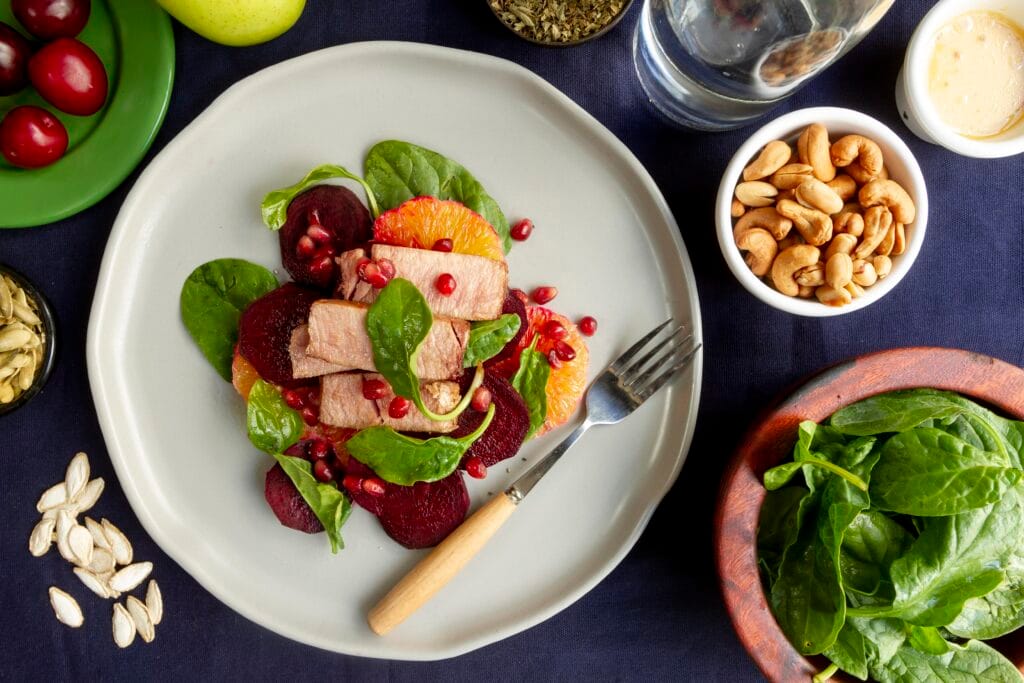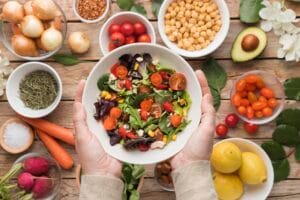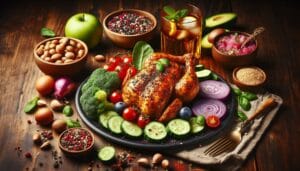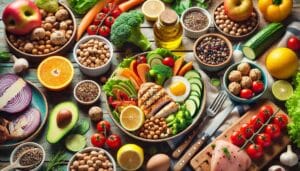How to Make Plant-Based Diet Recipes for Beginners: Your Step-by-Step Guide
- Published -
- Reading Time: 5 minutes
-
Written by - Rajat N

Introduction: How Dieting Can Change Your Life
Do you know that a plant-based diet may help you reduce chronic illnesses, boost your energy level, and contribute towards saving the ever-warming planet? If you think that sounds too good to be true, then stay put. Shifting towards a plant-based diet doesn’t reflect merely an aesthetic lifestyle shift, but it’s a well-studied and prescribed way to boost your health and well-being. However, let’s be realistic; eliminating meat, and dairy, along with other sources of food can be very daunting. Where do you even begin?
Not to fret! By the end of this guide, you will have effective strategies along with deliciously simple recipes so that plant-based meals can be made by even the most novice of beginners. So let’s jump right to it!
source – https://www.youtube.com/watch?v=3K5qpb8b6hU
Note: The video content is intended to provide supplementary information and a different perspective on the discussed topic. All information and advice presented in this article are based on expert guidance and review.
What Exactly Is a Plant-Based Diet?
Before we start with the cooking, let us understand what actually is a plant-based diet. It does not involve iron-clad norms or rules. It is more about constructing your diet around whole: minimally processed plant foods. This may include, but is not limited to, fruits, vegetables, legumes, grains, nuts, and seeds.
Myth: Plant-based meals are primarily for vegans and vegetarians.
Truth: You don’t have to stop eating animal products completely. You just need to incorporate more plants into your meals.
Myth: Eating plant-based is too pricey and takes too long.
Truth: With the right recipes and planning, it’s both reasonably priced and extremely fast.
Step 1: Start Simple with Ingredients You are Familiar With
Do not fret; transitioning does not imply that your pantry now needs to be completely turned upside down. Instead, focus on recipes that center around ingredients that you already enjoy.
Easy Recipe: Veggie Stir Fry with Peanut Sauce.
Ingredients:
Mixed vegetables (broccoli, bell peppers and carrots)
Firm tofu or chickpeas
Soy sauce, peanut butter, garlic, and ginger
Cooked rice or noodles.
Steps:
Pour a tiny amount of oil into your pan and heat. Add the mixed vegetables and sauté.
Pour in the tofu or chickpeas for protein.
Quickly, add the soy sauce, peanut butter, minced garlic, and ginger into a bowl and stir.
Put the stir-fry and sauce together and serve with rice or noodles.
Tip: For additional nutrition, keep frozen veggies to prepare meals quickly. They provide the same benefits.
Personal Story:
When I was first starting to go vegan, stir-fry was my saving grace. They are simple, fast, and you can throw in any vegetables you have on hand. Even my selective eater cousin loved it!
Step 2: Try Out Plant-Based Proteins
One of the deepest concerns that most beginners have is, “Where will I get my protein?” The good news, they are a lot of plant-derived proteins available.
Best Sources of Protein:
Legumes: Lentils, chickpeas, black beans.
Tofu and Tempe: proteins that are made from soy and absorb flavor well.
Quinoa: a whole grain that is also a complete protein.
Nuts and seeds: almonds and seeds from chia and hemp.
Easy Recipe: Tacos with Lentils
Ingredients:
Tortillas
Taco spices
Lentils
Salsa, lettuce, avocado, or any side you like.
Directions:
Fry lentils with the traditional taco spices.
Put lentils and toppings into the tortillas to prepare the tacos.
A wholesome and delicious meal for you.
Expert Opinion:
As an expert in plant-based nutrition, Dr. Jane Smith explains: “Lentils and beans are typically protein-rich foods that also supply fiber, which is lacking in people’s diets.”
Step 3: Learn the Fine Art of Meal Preparation
When adopting a plant-based diet, meal prep becomes your best ally. Planning your meals enhances your productivity, diminishes stress, and helps you avoid unhealthy food choices.
Essential Elements of Meal Prep:
Batch Cooking Basics: Prepare a large quantity of grains (rice and quinoa) and beans (black beans or chickpeas).
Vegetable Preparation: Cut your vegetables at the start of the week so they are ready when you need them.
Sauce Making: Create multipurpose sauces such as pesto or tahini dressing.
Personal Anecdote:
The first time I prepared meals in advance, I created a large portion of roasted vegetables, quinoa, and hummus. I felt ecstatic to see all the nutritious meals I had ready when I opened the fridge. In addition, not ordering takeout means saving money as well.
Step 4: Being Adventurous with Taste
Cooking with plant-based ingredients should never be dreary. The secret lies in the spices, herbs, and sauces you can experiment with.
Flavor Enhancers:
Spices: Cumin, paprika, turmeric
Herbs: Fresh basil, cilantro, parsley
Sauces: Tahini, sriracha, soy sauce
Quick Preparation: Buddha Bowl
Components:
Base: Quinoa or rice
Protein: Chickpeas
Veggies: Roasted sweet potatoes, spinach
Sauce: Tahini lemon dressing
Instructions:
Order your base, protein, and veggies in a bowl.
Drizzle with your favorite sauce.
Mix and enjoy!
Tip: Don’t hesitate to try new things. You can add nutritional yeast directly to the dishes for a cheesy flavor.
Step 5: Perform Well in Social Settings Without Feeling Out of Place
Having a hard plant-based diet does not mean you will skip out on family get-togethers or even going out to eat.
Advice for Social Settings:
Share: Don’t keep your dietary needs a secret, tell your host about them beforehand.
Prepare a Meal: Introduce a plant-based cuisine everyone will appreciate.
Check The Menu: Most restaurants today have plant-based meals.
Case Study:
“I made vegan stuffing and even the non vegans loved it. I was surprised how easy it was to celebrate Thanksgiving while on a plant-based diet”, said Sarah a mother who learned how to celebrate holidays without compromising her lifestyle.
Step 6: Clarifying Unfounded Beliefs Linked to Plant-Based Diets
Unfounded belief: You will be left feeling hungry most of the time.
What happens: Foods from plant sources contain large amounts of fiber. This keeps you full for longer durations.
Myth: You will not get enough nutrition intake.
Post-vouch: Well-balanced meals can be equally nutritious and delicious. Don’t forget to include plant milk fortified with calcium and B12 supplements if required.
Views from Experts:
According to Dr. Emily Rivera, a wellness coach, very often, those who follow a plant-based diet report better digestion and increased energy.
Step 7: Small Victories – Take Time to Celebrate
Adopting a plant-based lifestyle is a process and not a one-off switch. Give yourself credit for every minor improvement.
These are a few of the many examples of change worth celebrating:
Making your first plant based meal
Using a new ingredient – tempeh
Setting a goal of one plant-based meal a day
My Personal Experience:
The first time I made plant-based lasagna, I vowed to make it better next time. While not perfect, it definitely tasted good, and more importantly, my family praised it which gave me more motivation.
The Bottomline – You Can Do It!
While moving on to a plant-based diet may seem challenging at first, a person is highly encouraged to focus on their journey and not the end goal. Using straightforward guides to cooking, planning meals, and a bit of thinking outside the box is all that is required to make interesting and delightful plant based dishes. Be innovative and enjoy the process.
So what are you waiting for? It is time to embark on the journey to delicious food, better health, and save the world.






